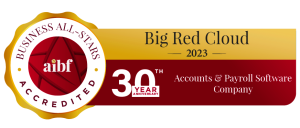Sometimes becoming a small business owner can sneak up on you. You may have started out helping friends by fixing their hair or repairing their cars. Then you received requests to perform more work and was offered payments for your acts of kindness. Now you are busy scheduling appointments and finding suppliers as you are trying to keep up with the administrative tasks. You are now officially a small business owner.
Now it is time for you to move on to the next step. You want to make your business more professional. This requires solid bookkeeping records, invoicing of clients and opening a store location. Yet how do you accomplish this? Where will you get the financing?
Business plans provide the answers many small businesses need to gain financing and to get a clearer picture on how they will manage operations. Think of these plans as a map that has routes you can take to reach the next stage of success. A business plan allows you to understand the nature of your operations, how your product or service is marketable, who will manage daily production functions, your accounting strategies, and what you will do to compete in your chosen market. It places you on the right routes so you don’t lose your way.
Yet what about financing?
Business plans lay out the complete costs and profit projections of your operations. It allows you to figure out how much you will need to spend for products, services and equipment for a functional business. It gives details on what it will cost to run daily processes. Also, the plan can help you decide on how much funding you need to grow operations and where you will get this financing.
Grants, microfinance loans and private investors are out there waiting to help new business startups. Yet these organisations want to ensure that your operations will be profitable and will want to see a business plan to understand the nature of your company. In your business plan, talk about your costs and financial assumptions.
Focus on describing these key aspects:
- Give details about your cash flow analysis. Financiers need this information to understand how you plan to distribute the money toward operations and loan repayments.
- Provide balance sheet assumptions that should present gross income projections, inventory and accounts receivable. Provide a presentation that highlights what you expect to have as assets in the next five years.
- Describe your Profit and Loss Account, which is your financial statement that is a summary of your costs, expenses and revenue. These financial statements help show financiers what the financial health of your business is as you are trying to raise your profits while reducing operational costs.
Not every small business is required to have a business plan, since you may have the finances on hand to put toward your daily operations. Yet these plans are ideal so you understand more about the market your business is competing in and how you plan to increase profits in the next several years. A business plan becomes your strategy to successfully manage operations and your startup finances.
Check our our handy and easy-to-read guide on business plans for small businesses. it’s really worth investing the time to understand how business plans work and what they can do for your business.





